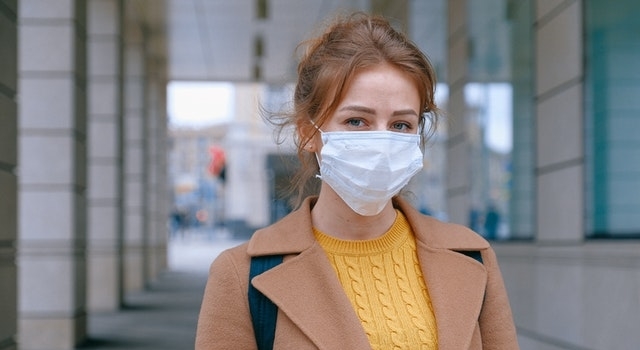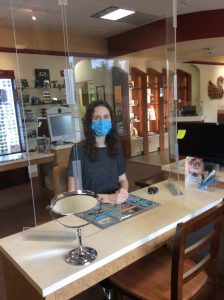Face masks are an important line of defense against COVID-19, but they are also causing a surge in dry eye cases.
Here are a few tips to avoid dry eyes.
Since the beginning of the COVID-pandemic, mask-wearing has become a global strategy to prevent the spread of infection. But, while masks help to protect us from infectious droplets, they can also lead to uncomfortable dry eye symptoms.
What is dry eye?
About 50% of the adult population suffers from dry eyes.
Dry eye can occur when the quantity or quality of your tears becomes compromised— usually as a result of another eye condition such as meibomian gland dysfunction, or other risk factors, including:
- Older age
- Daily prolonged screen time
- Contact lens wear
- Autoimmune disease
- Sjogren’s syndrome
When dry eyes become a chronic issue, the condition is referred to as dry eye syndrome (DES).
What are the symptoms of dry eye?
The most common symptoms of dry eye include:
- Dry eyes
- Red eyes
- Gritty eyes
- Itchy eyes
- Irritated or sore eyes
- Excessive tearing
- Excessive blinking
SEE RELATED: COVID-19 and Computer Vision Syndrome
If you are experiencing dry eyes, consult with an eye doctor to find the best solution for you.
How do masks cause dry eyes?
When masks are not fitted securely on the face, exhaled air flows upward toward the eyes. This constant flow of warm air into the eyes causes a rapid increase in tear evaporation, resulting in a lower volume of tears and decreased hydration of the eye.
Dry eyes from wearing masks has been termed ‘Mask Associated Dry Eye (MADE)’, a new clinical term now widely used by eyecare professionals.
According to Ophthalmology and Therapy (2021), a study conducted by the University of Utah reported a significant increase in dry eye cases since the start of the pandemic, as mask wearing has become more prevalent.
How to relieve mask associated dry eye (MADE)?
Here are some tips to help maintain eye moisture while wearing a mask:
1. Secure fit
Select a mask with a flexible wire that allows you to secure the mask over the bridge of your nose. You can also secure medical tape along the top of the mask to ensure that air cannot escape through the top.
2. Wrap-around sunglasses
Wear wrap-around sunglasses to protect your eyes from harsh winds that can cause an increase in tear evaporation and lead to dry eye symptoms.
3. Take frequent screen breaks
Practice the 20-20-20 rule to give your eyes a much needed break from the screen — every 20 minutes, focus on something around 20 feet away for at least 20 seconds. This will not only help to replenish the moisture in your eyes, but will give your focusing muscles a chance to relax.
4. Practice conscious blinking
Be aware of how often and efficiently you blink while wearing a mask. Ensuring frequent and complete eyelid closure will allow your tears to effectively coat the entire surface of your eye and maintain healthy moisture.
Here’s one exercise:
- Close your eyes completely
- Pause for two seconds
- Open your eyes
- Close your eyes again
- Pause for two seconds
- Squeeze your eyelids together for two more seconds
- Open your eyes
5. Eye drops
Apply over-the-counter artificial tears eye drops to help restore any moisture lost during prolonged mask wearing.
6. Relax with warm compresses
Place a warm compress on your closed eyelids to soothe your dry eyes and stimulate tear production.
7. See an eye doctor
Schedule an appointment with your eye doctor if your dry eye symptoms persist. Your eye doctor can advise the best course of treatment for long lasting relief.
LEARN MORE: Guide to Eye Conditions
Schedule an eye exam with an eye doctor near you to get the dry eye relief you seek.
Masks help to protect us from infectious droplets, but they can also lead to uncomfortable dry eye symptoms.
Here are a few tips to avoid dry eyes due to mask-wearing.









